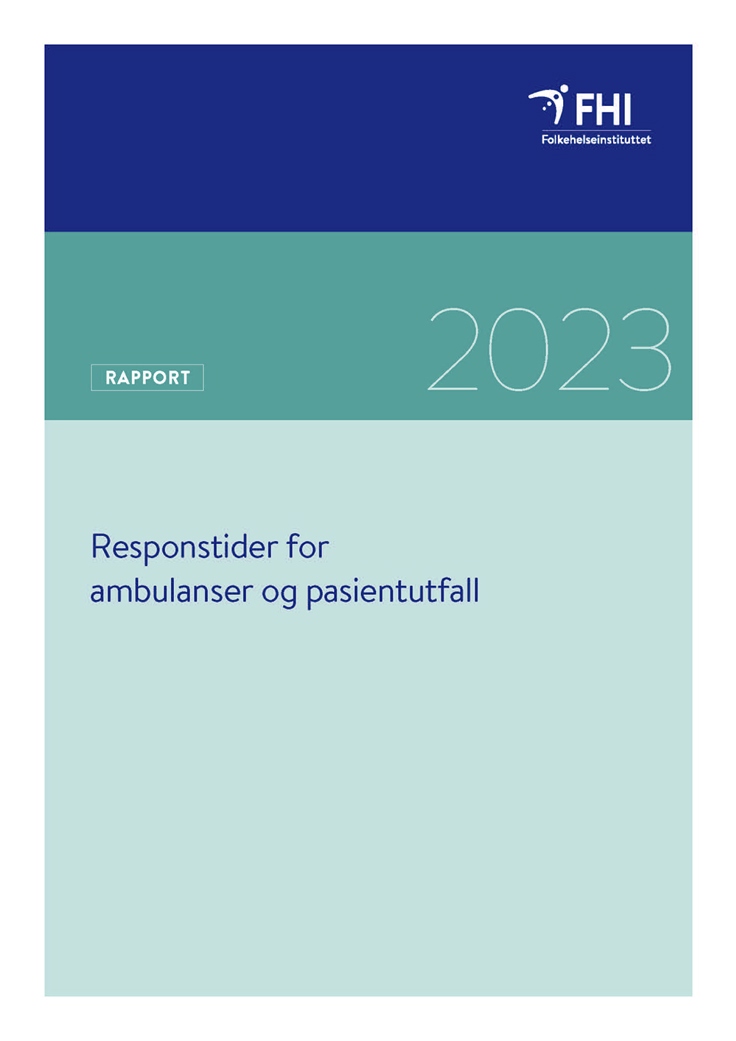Ambulance response time and patients’ outcome
Report
|Published
In this report we present results from our analysis of the effect of ambulance response time on probability of survival after life-threating emergencies out of hospital.
Key message
Having rapid access to emergency care is important for people’s sense of security in society. When a life-threatening emergency occurs, everybody in Norway has access to free ambulance services as means of transport to hospital. The parliament has committed to regulation of ambulance response time. Response time is the time from the alarm central answers an emergency call until an ambulance is present at the scene of the incidence in cases of life-threatening emergency, also called code red alarms.
Contrary to waiting time guarantees for specific surgeries, regulating ambulance response time will give an expected standard for ambulance responses to the public, setting a time most people should expect to receive ambulatory services after dispatch, for example 90% should expect an ambulance on the scene within 12 minutes in urban areas or 25 minutes in rural areas.
Ensuring rapid help can limit potential consequences of the emergency incidence for patients. For society, providing better care can be an effective strategy to reduce later burden of disease. A central challenge is the dimensioning of services to ensure capacity is sufficient so that those in need get help in a timely manner.
It is not easy to determine the effect response time has for patient survival after experiencing a life-threatening incidence outside of hospital. In this report we present results from our analysis of the effect of ambulance response time on probability of survival after life-threating emergencies out of hospital. Emergencies include both trauma and disease.
The analyses included data from code red ambulance dispatches for life-threatening emergencies 2017-2021. During this time, the number of emergency dispatches increased by 38%. The increase was most prominent during the last two years, i.e., during the COVID-19 pandemic. From 2017-2021 median response time increased about a minute, from 10.6 to 11.7 minutes. Several factors can influence ambulance response time and many other factors than response time can influence the patient’s chance of survival. We were not able to include these factors in the analysis presented in this report.
The analyses showed that the probability of 30-day survival was lowest for patients when the ambulance was on scene of the incidence within 12 minutes. Patients diagnosed with stroke or acute myocardial infection had lower 30-day survival compared to other patients, regardless of response time.

